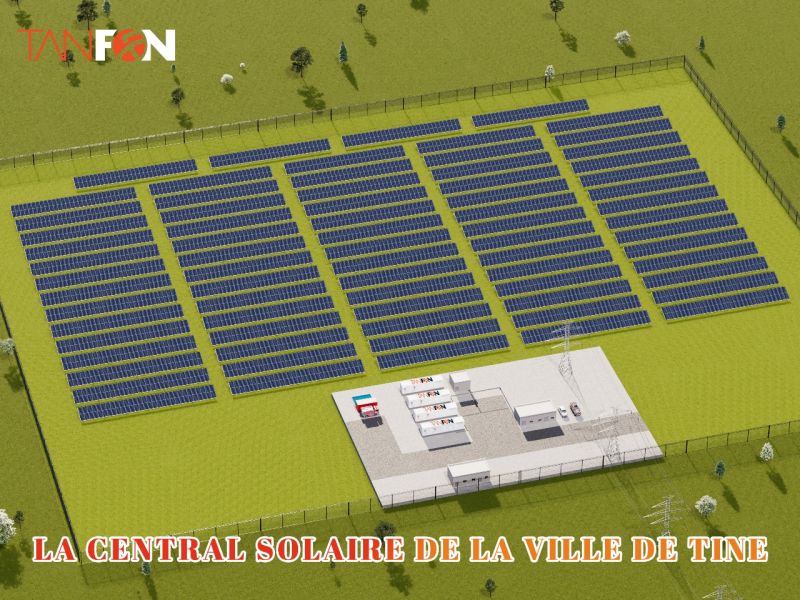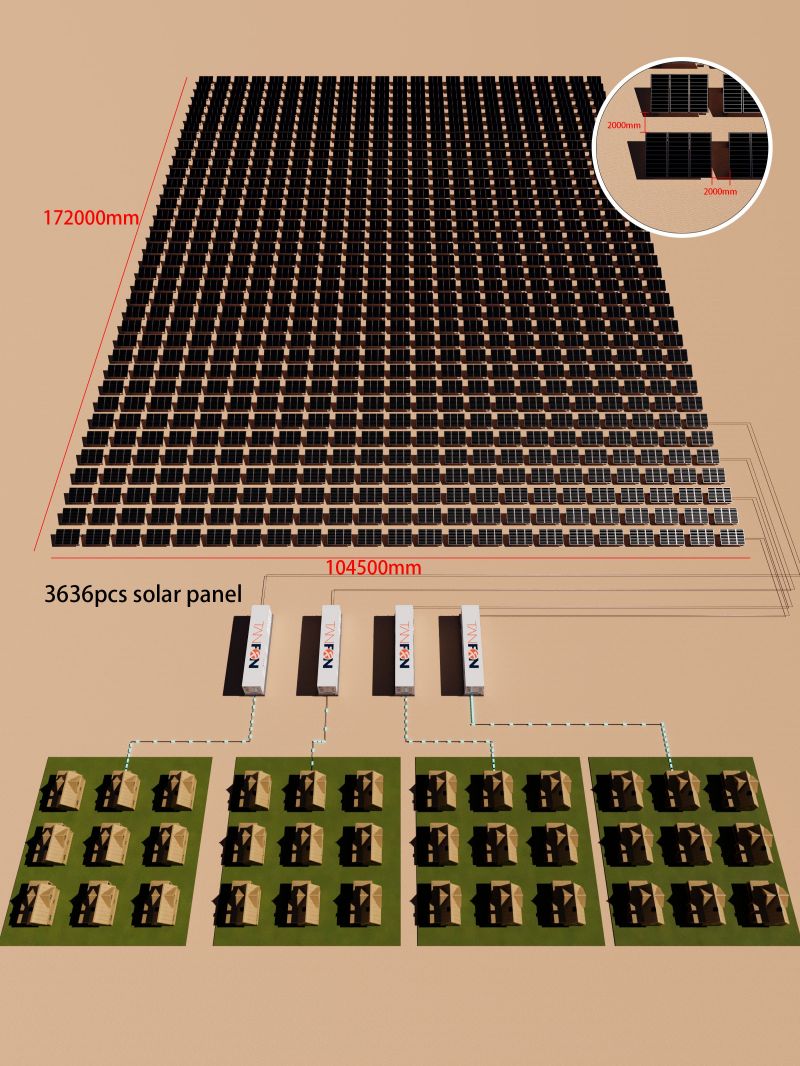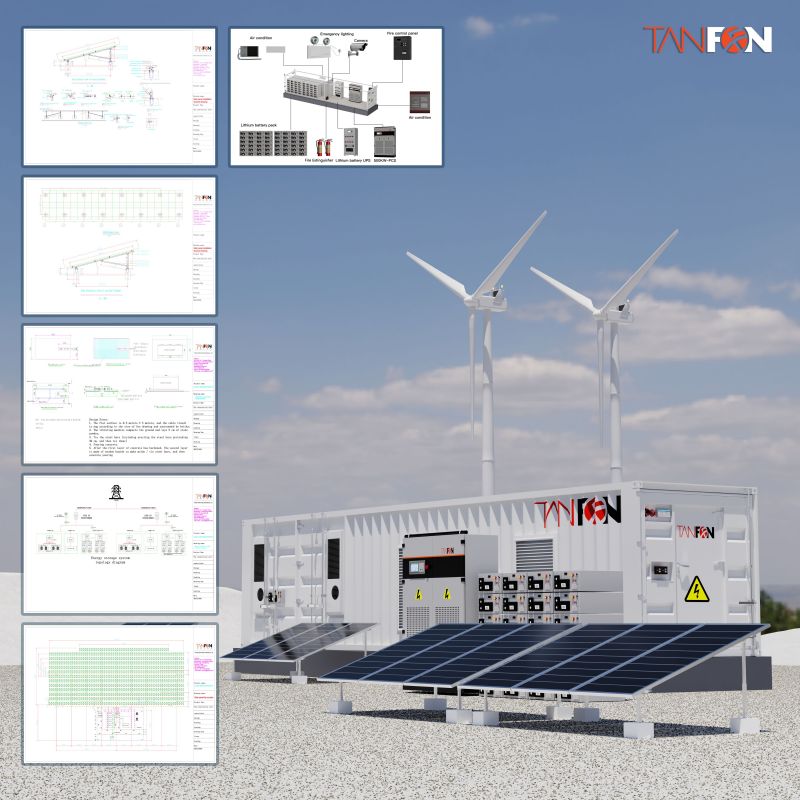Top 10 Solar Project Solution Factory In China
What are the main differences between "high voltage grid connection" and "low voltage grid connection" of photovoltaic power stations?
1. What are the voltage levels of high voltage grid connection and low voltage grid connection?
High voltage grid connection: The voltage level of high voltage grid connection system is usually 10kV and above, and the common voltage levels are 10kV, 35kV, etc. It is suitable for large-scale distributed photovoltaic power stations, usually hundreds of kilowatts to several megawatts. Such power stations are usually used in industrial, commercial buildings or large public buildings.

Low voltage grid connection: The voltage level of low voltage grid connection system is usually 380V (three-phase) or 220V (single-phase) for grid connection, which is suitable for smaller-scale distributed photovoltaic systems. It is suitable for small-scale distributed photovoltaic systems, usually thousands of kilowatts to tens of kilowatts. Such systems are commonly found on residential roofs, small commercial buildings, etc.

2. Comparison of equipment required for high voltage grid connection and low voltage grid connection:
1. High voltage switchgear: used to control and protect high voltage circuits, providing functions such as disconnection, isolation, protection and measurement, and regulating power quality. Including circuit breakers, disconnectors, load switches, SVG/APF and other compensation devices.
2. Transformer: boosts the low-voltage electric energy generated by the photovoltaic system to the voltage level required by the high-voltage power grid (such as 10kV or 35kV). Usually an oil-immersed transformer or a dry transformer.
3. Protection device: used to protect the safe operation of the power system and prevent faults such as overcurrent, overvoltage, and short circuit. Including relay protection devices, lightning arresters, fuses, etc.
4. High-voltage cable: used for the transmission of high-voltage power, connecting transformers, high-voltage switchgear and grid connection points. Suitable for high-voltage cables with voltage levels of 10kV and above.
5. Grid-connected inverter: converts the DC power generated by photovoltaic modules into AC power and boosts it to a voltage level that matches the high-voltage power grid. High-voltage grid-connected inverter, with high-voltage output capability.
6. Monitoring system: used to monitor the operating status of the photovoltaic system in real time, including power generation, voltage, current, fault alarm, etc. Including data collector, monitoring software, communication module, etc.
7. High-voltage metering equipment is used to measure the electric energy transmitted from the photovoltaic system to the power grid. Including high-voltage energy meters, mutual inductors, etc.
8. The grounding system is used to ensure the safety of the power system and equipment and prevent electric shock accidents. Including grounding wires, grounding grids, etc.
9. Auxiliary equipment provides necessary auxiliary functions, such as ventilation, heat dissipation, fire protection, etc.
Including ventilation equipment, air conditioners, fire extinguishers, etc.
Low-voltage grid-connected equipment:
1 Low-voltage switchgear and distribution box: used to control and protect low-voltage circuits, providing functions such as cutting off, isolation, protection and measurement. Distribute the AC power output by the inverter to electrical equipment or the power grid, including necessary protection and control equipment.
2. Grid-connected inverter: converts the DC power generated by the photovoltaic module into AC power, suitable for grid-connected use.
3. Electric energy metering equipment: used to measure the electric energy transmitted from the photovoltaic system to the power grid, as well as the electric energy consumed from the power grid. Bi-directional energy meter (Bi-directional Meter), which can record the bidirectional flow of electricity
4. Cable: DC cable (connecting PV panels and inverters), AC cable (connecting inverters and distribution systems

III. Comparison of grid connection processes
High-voltage grid connection: The grid connection process is complicated and needs to be reviewed by the power grid company, and the power system needs to be designed and modified to meet various technical specifications and safety requirements of the power department. The grid connection point is usually located on the high-voltage side of the power grid and requires a special substation or high-voltage equipment room
Low-voltage grid connection: The grid connection process is relatively simplified. Residents or small commercial users can directly apply to the power grid company for grid connection, and the approval and installation process is relatively fast. The grid connection point is usually located in the low-voltage distribution system at the user end, and is directly connected to the grid. Low-voltage power grid for users
IV. Cost Analysis
High-voltage grid connection: The initial investment is high, including high-voltage equipment, construction and grid connection costs. It requires a professional operation and maintenance team and regular maintenance, and the maintenance cost is high. It is suitable for large-scale projects and has good long-term economic benefits.
Low-voltage grid connection: The initial investment is low, the equipment and construction costs are low, and it is suitable for small-scale users, but the scale effect is not as obvious as the high-voltage grid connection system. Maintenance is relatively simple, and general users can perform daily maintenance after simple training.
Combining the above four comparative analyses, it should be clear at a glance whether the capital party chooses high-voltage grid connection or low-voltage grid connection. In general, it can be summarized as: "If you can choose low voltage, choose low voltage, and if there is no other way, choose high voltage grid connection"
